There are two consistent seasons in Florida (AKA “home-sweet-home”): summer and not-summer.
Florida and Summer are best friends, I’m sure of it. During the not-summer months (also known as “winter”) Florida must hang with her good ol’ buddy Summer. They are true best friends with a love/hate relationship in full effect. One moment Florida must hang with Summer. Then, they break off their friendship and the sixties roll-in. Trust me friends, sixty is cold… break out the parka and boots!
During the official summer months, Florida and Summer are best friends…completely in love with each other. Think of weather in the hundreds and the scorching sun beating down on your “I-just-can’t-take-it-anymore” shoulders.
After spending much of the not-summer months in the house (sixties are way too cold for venturing out), the presence of Summer means it’s time to play! Beaches must be visited. Don’t forget the neighborhood ducks to visit and juicy watermelon to eat. All this fun means sun protection must be planned.
In our pre-simple days, sun protection consisted of a bright pink tube bought from the store. Slowly over the years I’ve changed the products we use for effective homemade recipes.
The thought of making homemade sunscreen appears daunting, at least it did to me! But, I’m here to say, “it’s simple”! I’m not a gal who enjoys complicated (“Live Simply”). With a few simple ingredients and ten minutes of time sunscreen can be made. Let’s talk about the simple ingredients. If you’re already making homemade products, you probably own a few homemade sunscreen ingredients.
1. Coconut Oil: Protects the skin and tissues from sun damage and successive exposure. Coconut oil doesn’t block the sun completely, allowing the skin to absorb beneficial Vitamin D. Consuming coconut oil during the summer months can help prevent sun damage. Make sure the coconut oil is pure and not processed. Note: Coconut oil alone will not protect against the sun.
2. Sweet Almond Oil: Contains a smaller SPF (around 5). Also provides Vitamin E which nourishes the skin.
2. Shea Butter: Contains fatty-acids along with Vitamins A & E. Shea butter moisturizes and provides a small amount of sun protection.
3. Carrot Seed Oil: Contains high levels of Vitamin A and boasts a high SPF (estimated around 30-40). I also use carrot seed oil in my homemade lotion for it’s amazing antioxidant properties.
4. Zinc: Provides physical protection against damaging rays and SPF. A non-nano zinc will not absorb into your bloodstream.
5. Beeswax: This ingredient simply solidifies the oil producing a spreadable lotion. Beeswax will melt when exposed to heat.
Along with homemade sunscreen I also include foods in our summer diet which aid in sun protection, such as: dark leafy greens, berries, carrots, egg yolks, tomatoes, and sweet potatoes.
When our family plans to be out for a long period of time (such as an all day trip to the beach), I add extra sun protection by using: hats, long-sleeve swim shirts, and a beach umbrella. I also reapply my homemade sunscreen throughout the day.
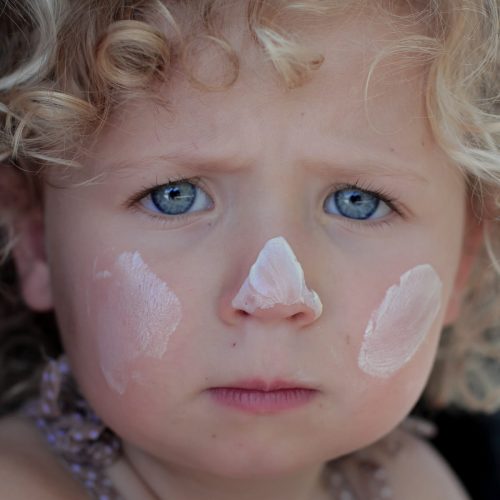
Homemade Sunscreen
Ingredients
- 1/3 cup coconut oil
- 1/4 cup sweet almond oil
- 2 TB shea butter
- 1/4 cup beeswax pellets
- 4 TB zinc powder non-nano
- 20-25 drops carrot seed essential oil
Instructions
- On the stove-top, add 1 cup of water to a small saucepan. Place a heat-resistant glass bowl on top of the saucepan. Bring the water in the saucepan to a boil, then reduce to a simmer. This creates a homemade double broiler to keep ingredients from over-heating.
- In the glass bowl add: coconut oil, shea butter, and beeswax. Melt the ingredients, stirring frequently.
- Remove the bowl from the heat, add to the coconut oil mixture: almond oil, carrot seed oil, and zinc powder. Stir.
- Once removed from the heat the beeswax will begin to set.
For an on-the-go option: using a dropper pour into lip balm tubes [(like this)|http://www.amazon.com/gp/product/B00DQNFFDA/ref=as_li_tl?ie=UTF8&camp=1789&creative=390957&creativeASIN=B00DQNFFDA&linkCode=as2&tag=livsim07-20&linkId=ZJNSQIVV5SCFM2I7]. This option produces a small amount of sunscreen per tube, but I like the portability of this option. I keep a small tube in my purse (wrapped in a Ziploc bag) for just-in-case summer moments.
- The sunscreen will solidify after about five minutes. The final result will be a spreadable lotion.
Ingredient Notes
Using this recipe, I make one 4oz. mason jar and six lip-balm tubes of sunscreen.
I’ve included “where to buy” links to show the products I enjoy using. Many of these ingredients can also be found at local health food stores.
If you’re planning to be in direct sun for hours, I highly recommend using sun protection such as hats and protective clothing along with sunscreen. This sunscreen alone may not provide the full protection needed if you are fair-skinned and burn easily. Sunscreen is just one component of protecting the skin from the sun. Homemade sunscreen can perform differently than store-bought sunscreen and should not be relied on for full protection during a long day at the beach or pool.
More Recipes You May Like:
Homemade Ultra-Moisturizing Lotion (Without Coconut Oil)

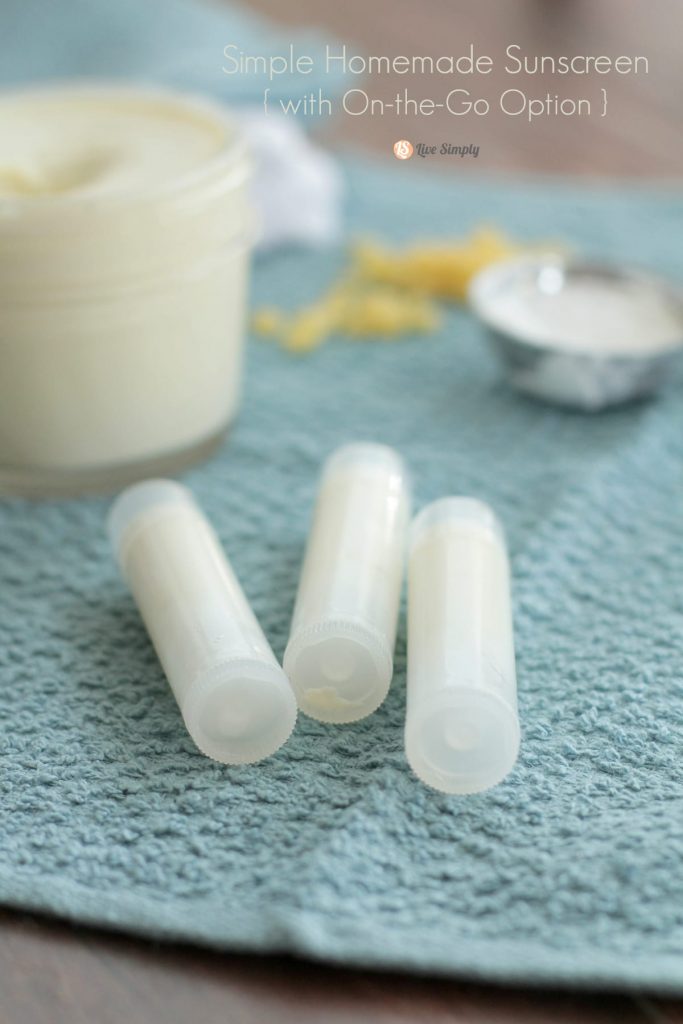
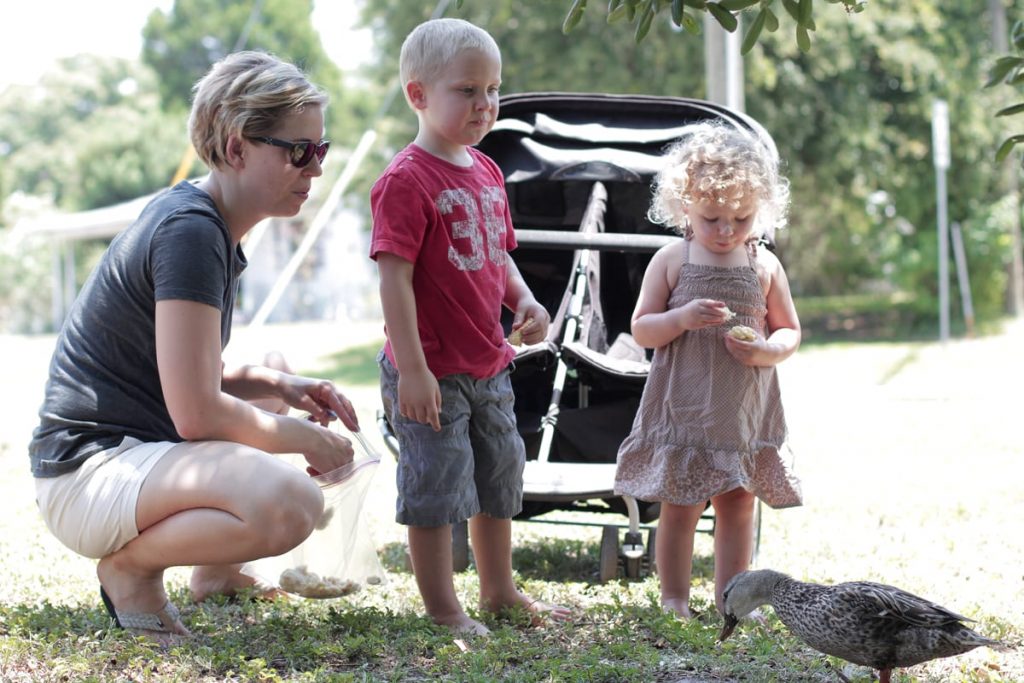

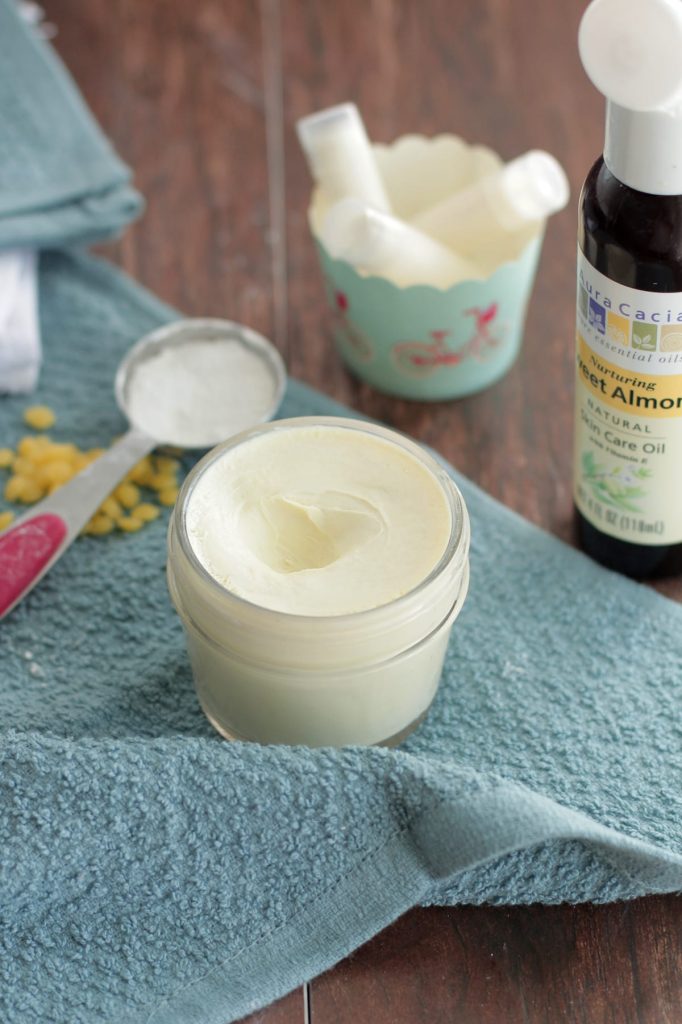
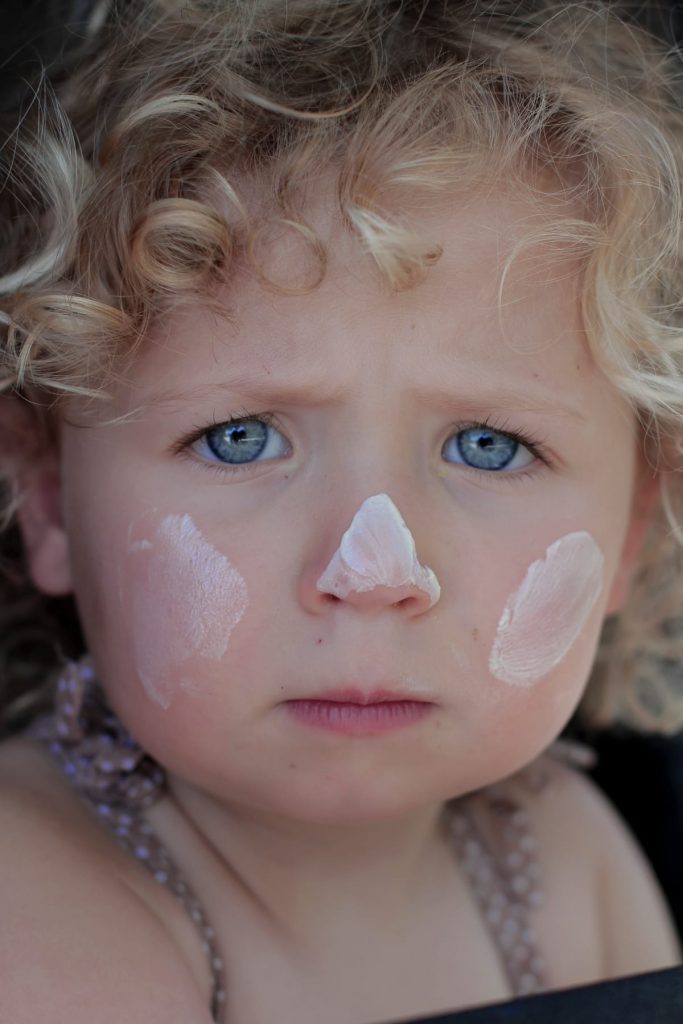
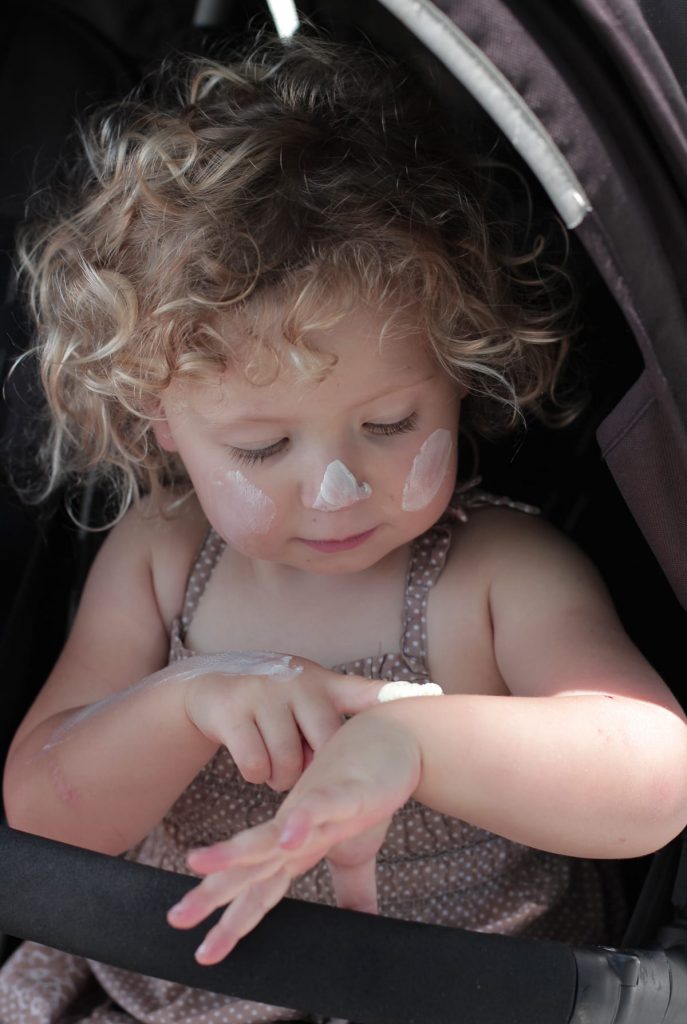
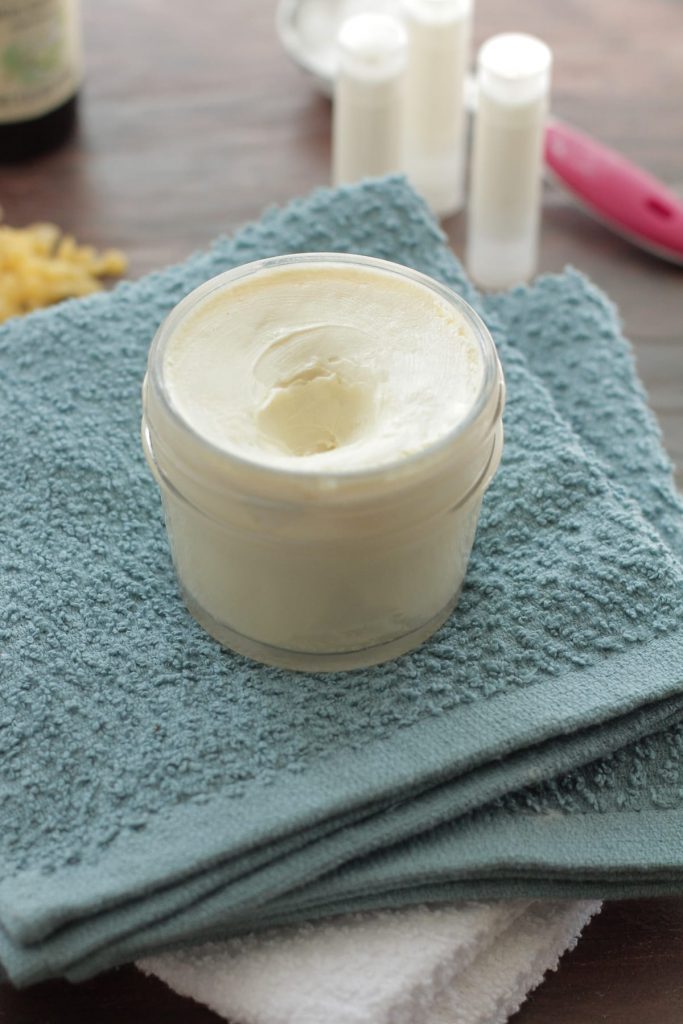
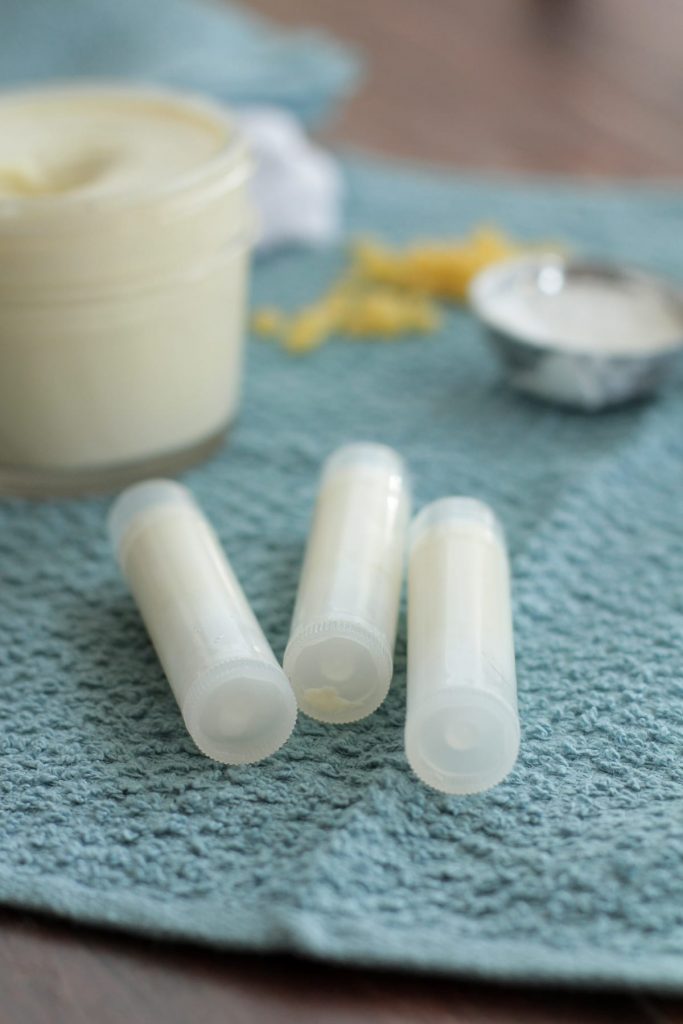
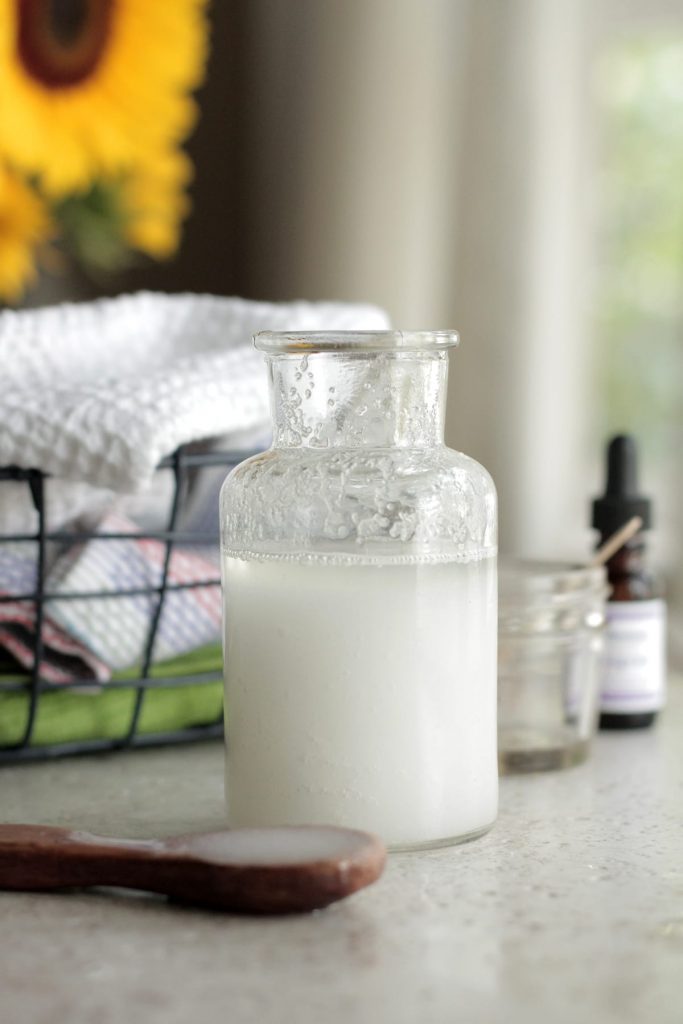
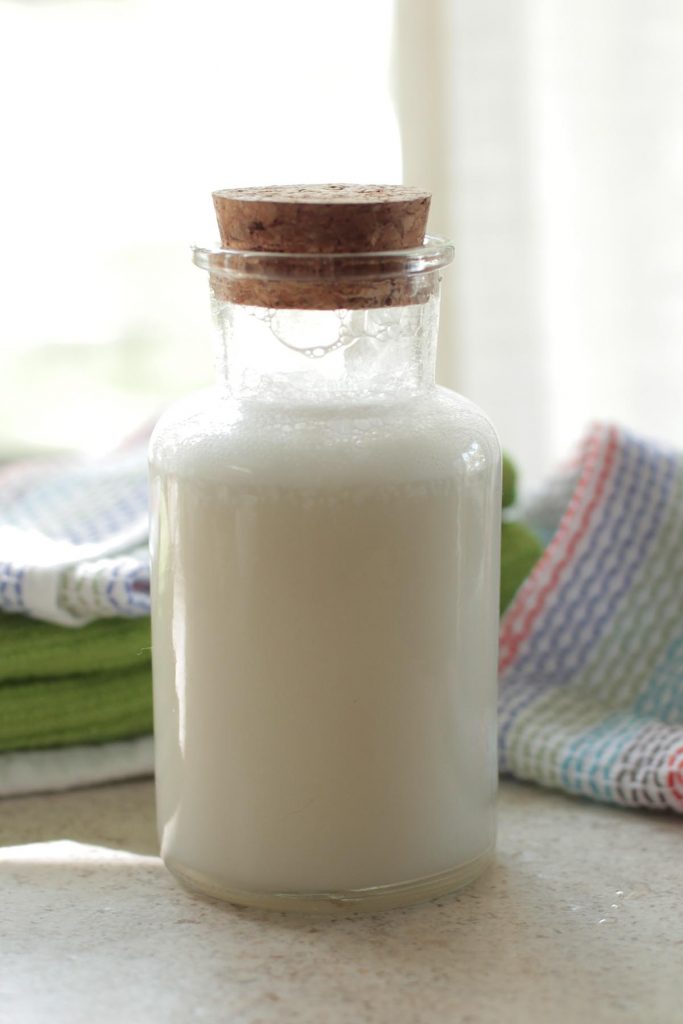
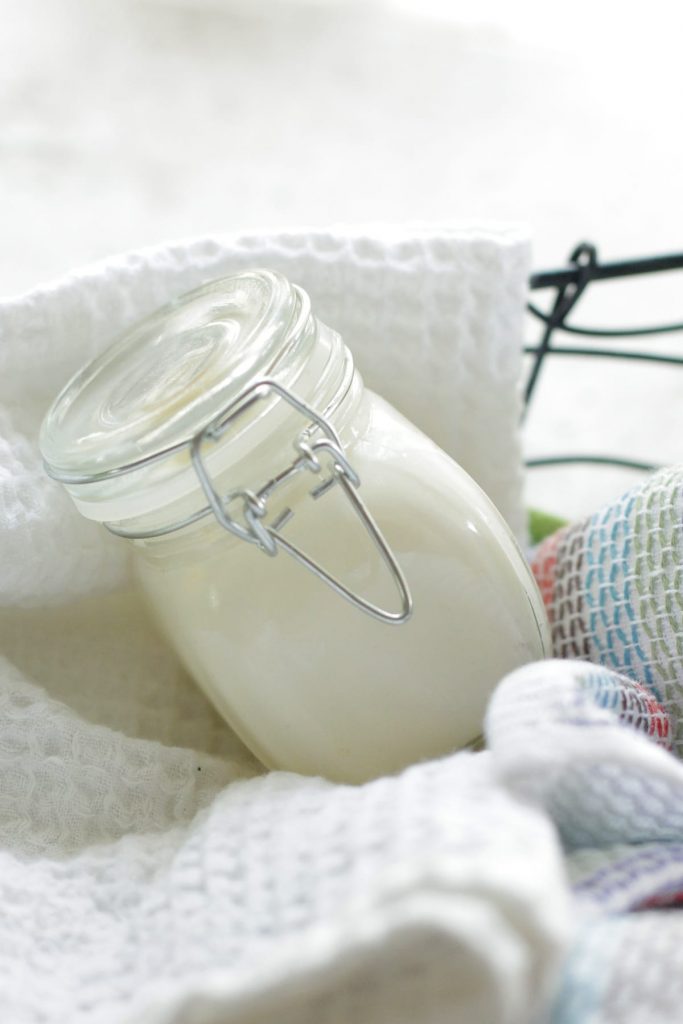
Thank you for sharing this recipe! I’d like to try it but have a question. Does the zinc oxide leave a whitish film on the skin? I have dark skin that tans easily but still want to wear sunscreen regularly. Many zinc-oxide-containing sunscreens that I have tried make me look kind of ghostly. Have you noticed anything like that with your sunscreen?
Thank you for answering
What SPF number is your sunscreen?
Hey Ginger, I don’t know an exact SPF for this.
Hi Kristin,
thank you so much for another wonderful recipe! I was wondering if there any way I can add aloe vera gel into this recipe? Thanks.
Julia
Hey Julia, I personally wouldn’t since the mixture might not mix well and bacteria contamination could occur.
Hi Kristin,
Would it be possible to substitute zinc powder non-nano with ground pumpkin seeds? I am scared to add this zinc powder to the recipe.
The store that I bought some of the ingredients told me to use ground pumpkin seeds instead cause these has a lot of zinc on it. Please I need your reply.
Thank you.
Estrella
Hey Estrella, I don’t have any experience with using pumpkin seed powder as sunscreen. Personally, I wouldn’t do it.
I’m definitely interested in trying this. I have a hard time wearing conventional sunscreen cause my skin (especially my arms) tends to break out in hives as soon as my skin heats up from the sun. I’ve probably tried a half dozen different brands of lotions and sprays all with the same result of the hives.
Just made this and so far, I am very happy with the results. My family and I used it in the Florida sun and heat, and it worked great! Nobody got burned in the 4 hours we were outside. Before it set, I poured some in a small silicone tube from Target to squeeze out the sunscreen, and that was also very successful. Thank you for the recipe, and I will definitely make this again!
That’s so great to hear, Julie! Great idea!
I’ve made this twice now and I absolutely LOVE this sunscreen! It spreads so nicely and I’ve never gotten burnt. I used jojoba oil instead of almond just because it’s a tad cheaper and I add some lavender essential oil for an added scent. Thank you so much for sharing your recipe =]
Hi,
I made a suntan cream using shea butter, cocoa butter all raw, avocado oil, coconut oil, added vitamin e oil, bees wax ,essential oils of lavender and peppermint and of course non nano zinc oxide. My question is this, why is my lotion turning a light grey colour? When it is first cooled it has a yellowish top, then when dipped into the cream to starts to change colour. It is stored in a metal tin. Any thoughts or ideas would be greatly appreciated..thank you
I’m all for natural products but I would never use a homemade sunscreen on either myself or my kids.
I’ve done extensive research into it as I run a handmade cosmetic and body product business. The reason I wouldn’t is because of a quirk of zinc oxide (that’s what the white powder your calling zinc powder is) while it looks like the zInc is evenly distributed through the mixture zinc clumps on a microscopic scale, to small for us to see but unfortunately still enough to let UV rays through. Without lab grade equipment this is unavoidable and so it won’t provide protection as sections of your skin will be completely unprotected by the sunscreen. Getting a sunscreen formulation approved for sale as a sunscreen is actually quite difficult because of this.
And incidentally you shouldn’t let the fact that you may not be able to pronounce an ingredient put you of it before you’ve researched what it actually is and does, for example
Cocus nucifera oil, prunus amygdalus dulcis oil, Butyrospermum parkii butter, cera alba, zinc oxide, daucus carota
Could seem pretty intimidating but that is what would be listed on the label of this recipe if it was being sold in the states.
One more point, this recipe doesn’t need it but any recipe that contains water should contain a preservative and grapefruit seed extract or vitamin E are not enough. If you don’t want to use a preservative then the product should be keep the refrigerated for no more than 3 days and then thrown out. Even if it still looks and smells OK microbes can still begin growing and could make you or your family very sick. Dry products or things with no water in them are fine unless they are likely to get water in them in the course of their use one example would be something like a jar of sugar scrub or an after shower moisturizer that you’re reaching into with wet fingers.soap is also fine (solid or liquid) as the ph is to high to allow microbes to grow.
I know this may come across as very negative but the things I’ve mentioned have the potential to be life threatening but not many people know about them. I think it’s great that you want more natural alternatives for you and your family but I’d stick to commercial formulations of sunscreen and add a preservative to your water based recipes, there are some perfectly safe preservatives out there and while the most natural of them are a bit more pricey you only need a very small amount of them (typically 2-4ml per 100 ml of product) which should be only a few cents per batch. To my mind that’s a tiny price to pay for peace of mind that my family is safe.
Thanks for sharing, Ursula! I agree, doing your own research and taking precautions, whether you’re making something or purchasing the product, are very important. What’s your shop/business? I would love to check out your products! Also, I’m curious about your recommendations for natural preservatives that you have found to be successful. Would you mind sharing what you’ve used? I’ve definitely done research into several options, so I’m interested to hear your suggestions. Thanks!
My business is in Dunedin, New Zealand and I don’t have a website at the moment, I mostly just sell at markets, it’s Princess & Firebird Body & Bath though.
As for preservatives I use 2 depending on what’s needed by the customer normally I use something called glydant plus which isn’t very natural but is very effective. If a customer wants something more natural then I use something called naturagard which is still effective but I have to use more of it and is more expensive. Unfortunately my supplier has stopped selling both of them and those are both brand names. You have a lot more selection available to you in the states than I do in NZ I suggest you have a look at the brambleberry site they should have some good information for you.
P.S. I’m so jealous of the selection you have for cosmetic ingredients over there I have only about 1/10th of it here.
Thanks so much! Great info!
Hi. Thank you for your recipe! I’m having a tough time getting it to a creamier consistency. It stays quite liquid until it sets after I either pour it into jars or just let it set it the glass bowl. Do you have any suggestions?
Hey Mandi, Does the sunscreen set once it’s cooled? If so, that’s normal. The beeswax needs some time to solidify, which doesn’t happen until the mixture cools. Or, does the sunscreen remain liquid even after cooling? If so, then I’d either increase the zinc a bit, or add a bit more beeswax. The zinc should improve the creamy texture, and the beeswax should help solidify the mixture.
is this sunscreen good for acne prone skin and also if you can tell me home made mosturiser recipe for acne prone skin .
Hey Kanika, You may want to go light with the sunscreen on your face since coconut oil may be an issue for acne-prone skin. For a moisturizer, this is my current favorite: https://livesimply.me/2016/04/15/2-ingredient-aloe-facial-moisturizer/
Thank you for the recipe! Will try it for body sunscreen. Am wondering what you would suggest for the face…acne prone and I know coconut oil doesn’t work for me and a little scared of the beeswax. Do you think I could make a two ingredient facial sunscreen of zinc plus tamanu oil or jojoba?
Hey Sandy,
Beeswax is breathable, so it won’t/doesn’t clog pores. I actually use a combo of beeswax and oil to remove my makeup (including foundation now) each night: https://livesimply.me/2016/03/25/2-ingredient-makeup-remover-balm/. For the coconut oil substitution, here’s a list of oils that according to the author aid in sun protection: http://hybridrastamama.com/natural-oils-as-sun-protection/.
Would you apply this to an infant? I have a 4 month old and we are moving to Florida (from Wisconsin) in two weeks! I’m wondering about the carrot seed oil in particular on a baby’s skin…
Hey Hannah, Here’s a great list I refer to when it comes to essential oils and kids: http://www.thehippyhomemaker.com/essential-oil-safety-babies-children/. According to the list, carrot seed shouldn’t be used until 6 months plus. For now, I would recommend really covering up your sweet little one. Welcome to Florida!!
Thanks so much! Maybe you could write a post for how to survive (naturally) in Florida with babies! Haha. I feel completely lost. I’ve lived in the Midwest my whole life!
That’s a great idea, Hannah! We stay inside a lot during the summer, at least during the day and go out in the late afternoon/evening. We also eat lots of skin-nourishing foods, like berries and healthy fats. And when we go out, we cover up! It’s soooooo hot in Florida during the summertime that most of us don’t enjoy being in the sun for a long period of time.
Just made (like) this after searching recipes on pinterest. I had to skip the carrot seed oil (just lack it) and used cocoa butter instead of shea butter (have the first, lack the latter. I’m very much a “use-what’s-on-hand” kinda gal). I doubled the batch and added some Aura Cacia Mellow Mix (just love the smell). I scraped the jar to apply to my skin now, and it goes on not at all cakey; good even coverage. I put some into an old deodorant stick, too, which I’m looking forward to using. Thank you!
Thank you for sharing, Grey! Enjoy!!
Can this be used on your lips as well? I told my husband I would make him some lip balm today and I came across your recipe and have all the ingredients on hand.
Hey Suzanne, I haven’t tried this on the lips, but I think it would work.
So, do you know what the SPF is for the finished product? Sounds great, thanks!
Thanks! I made some and really like it! Thanks for sharing your recipe!
You’re welcome, Rebecca! I’m so glad you like it :).
Am I reading the recipe correcrly, 4 tablespoons? All other recipes I’ve seen only call for 2. I want to make sure I’m right. Thanks!
Hey Rebecca, Yes, that’s correct. I personally found 2 tablespoons wasn’t enough coverage.
if we leave out the beeswax will this be an oil that can be sprayed on?
Hey Kim, I’ve never tried spraying the sunscreen sans beeswax, so I’m not really sure. It’s worth a shot!